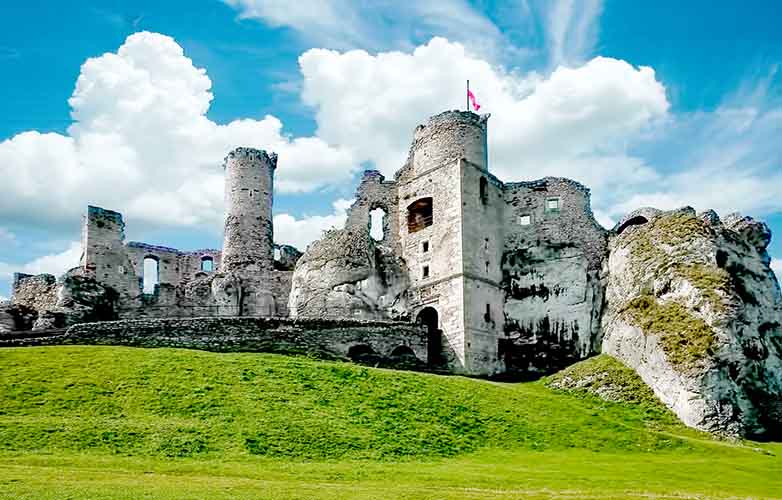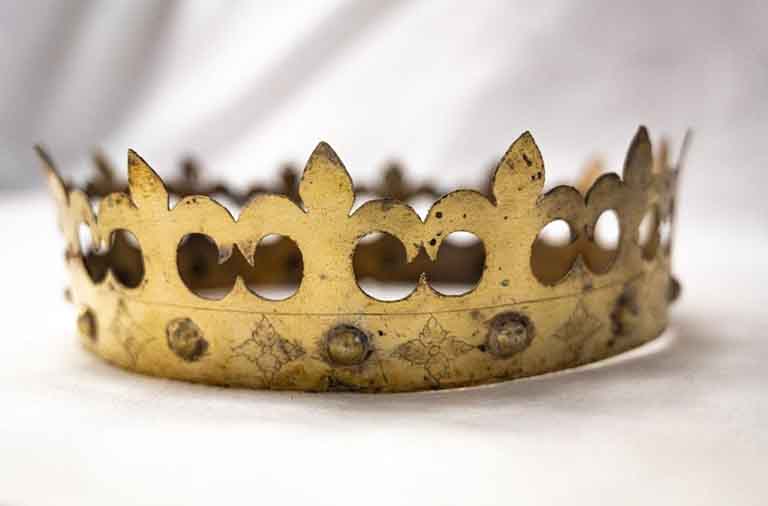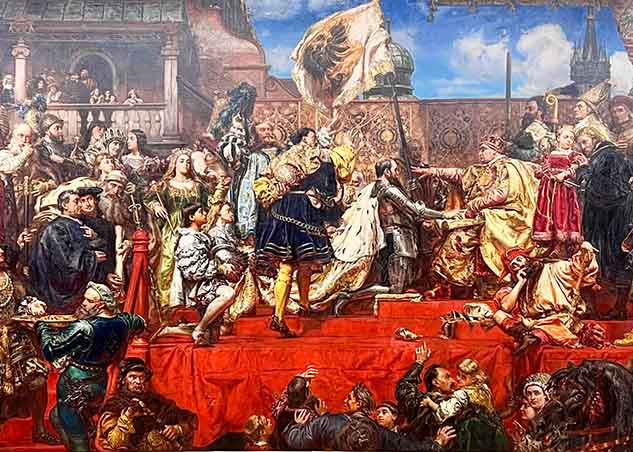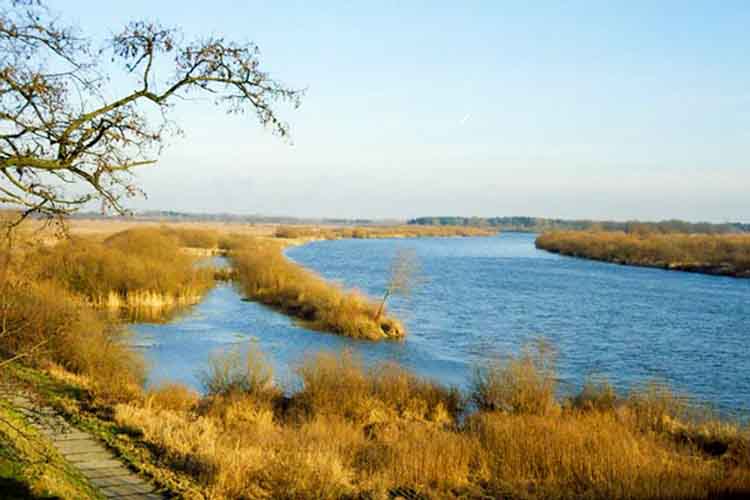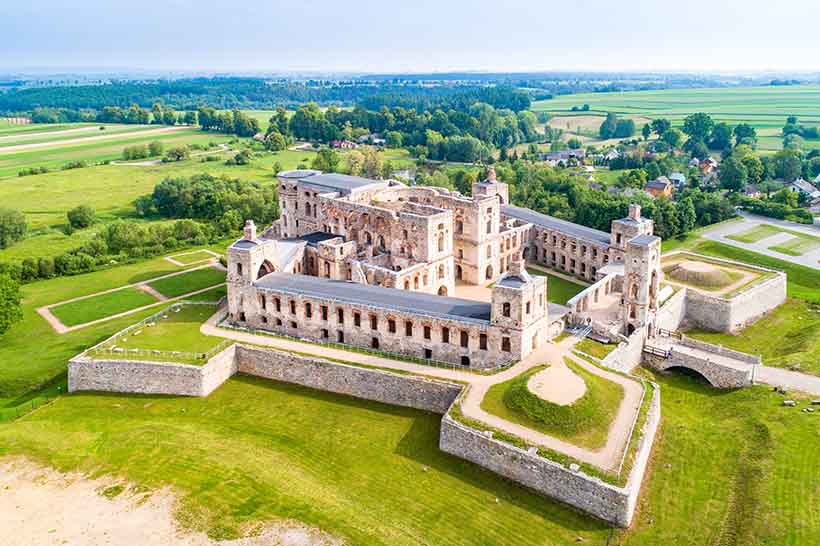The decision to build a castle in Malbork was made in 1280 after the fall of East Prussia. At that time, the ecclesiastical state was established and its superiors decided to build a new seat for their Grand Master. Sankt Marienburg, as the stronghold was called, was to be the most magnificent and impressive building in Europe at that time from the very beginning. 30 years later, it was already known that both the location of the castle on the Nogat River and the importance of this monumental building were so great that the then Master of the Order, Siegfried von Feuchtwangen, lived there and his successors lived there for over a hundred years.

Malbork, view from the Nogat River, 2018 (Photo: A. Wozniewicz)
The Teutonic Knights made sure that their most important seat was impregnable. The fortress was surrounded by special fortifications and the defensive system was connected to the city walls. The monumental building was surrounded by deep moats, and defensive towers were added. Over time, the former castle grounds became the Middle Castle, where visitors were received and hosted, and the High Castle became an impregnable fortress. At the end of the 14th century, the third part of the castle, the Low Castle, was expanded, which included warehouses, armouries and coach houses, as well as a granary. It was estimated that 30 million bricks were used to build and expand the Teutonic seat. The buildings and fortifications cover 18 hectares (44.5 acres) of land.
The Battle of Grunwald and the subsequent siege of the fortress by Polish-Lithuanian troops led by King Władysław Jagiełło were not the only significant event in the later history of this place. In 1457, during the Thirteen Years' War, the castle in Malbork was occupied by Polish troops. King Casimir IV Jagiellon ceremoniously entered the castle and from then on, for over 300 years, the castle remained within the Kingdom of Poland. Although the official banner of the Kingdom of Poland flew over Malbork, the Malbork district governor (starosta), who governed Żuławy, lived there on a daily basis. There was also a prison there.
These were not peaceful times. In 1626, Malbork was besieged by Swedish troops and after a fierce battle, they captured it, appreciating the courage and determination of the defenders, who were then released. The Swedes remained in Malbork for several years, destroyed and plundered it. In 1635, after a truce with the Swedes, the castle returned to Polish hands. A decade later, a huge fire at the High Castle destroyed its roof. Shortly after, it was stormed again by Swedish troops. The roof, destroyed by warfare and fire, was not repaired until the mid-18th century.
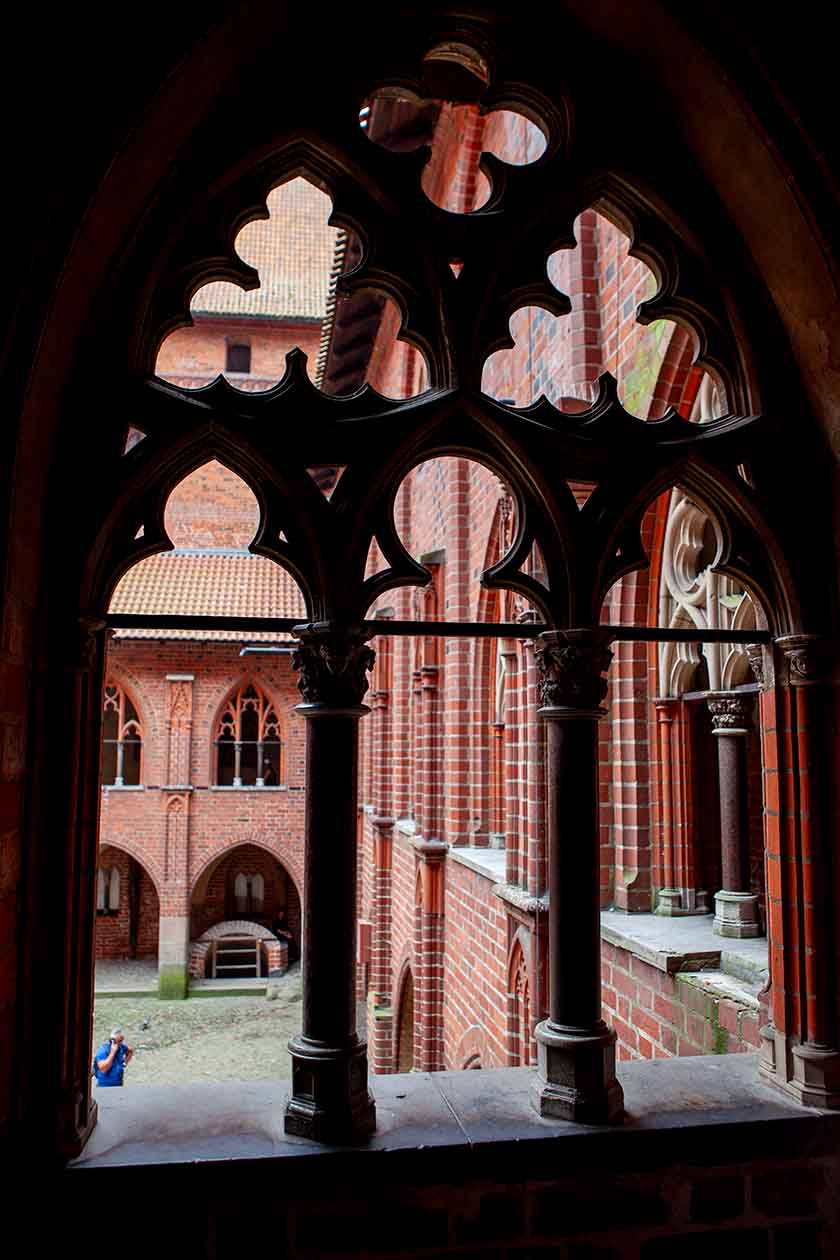
Malbork, view from the cloister to the courtyard of the Upper Castle, 2018 (Source: Photo: A. Wozniewicz)
After the first partition of Poland in 1772, Prussian troops settled in the Malbork fortress and the city became part of West Prussia. At that time, the castle underwent a major reconstruction for the needs of military barracks. In the following years, the Germans decided to rebuild the castle in its original Gothic style. The High Castle and partially the Middle and Low Castle were rebuilt, and a museum was also organized there. The Germans managed Malbork until the Third Reich.
During World War II, the greatest destruction was caused by the Red Army in 1945. Previously, military operations had bypassed this place. It was only the arrival of the second Belarusian front that led to two months of fighting, as a result of which more than half of the castle's historic substance was completely destroyed. The castle returned to Poland as a ruin after the end of the war.
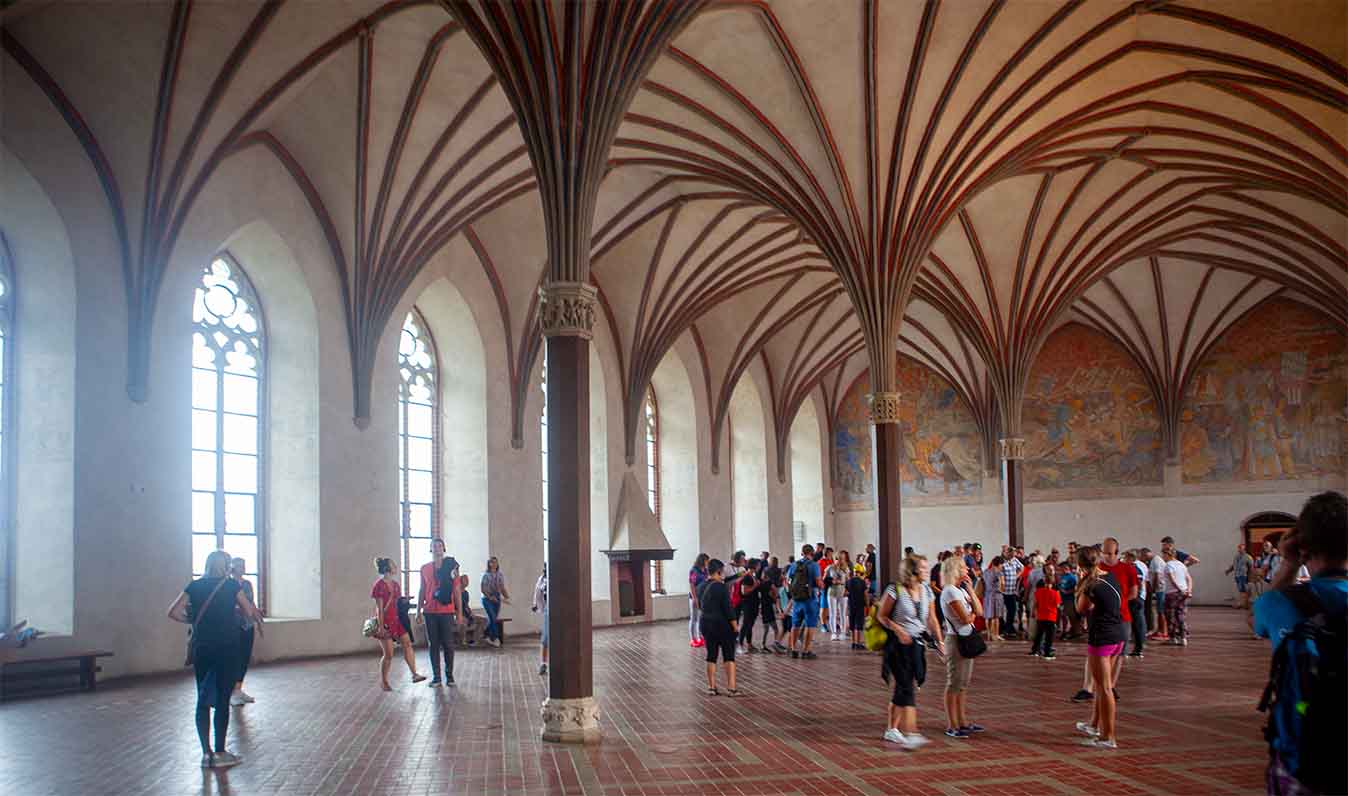
Malbork, Gothic interiors, 2018 (Source: Photo: A. Wozniewicz)
After the liberation, the Polish Army Museum was established in the surviving part of the castle buildings, and in the early 1960s, the reconstruction and restoration of the castle began based on old paintings and engravings. Since then, the Malbork Castle Museum has also been operating, supervising these works. Their effect was so spectacular that in 1997, Malbork Castle was included on the UNESCO World Heritage List. Since then, the former Teutonic seat has been a mandatory place for school trips, and tourists from all over the world are very happy to come.
The Malbork Castle Museum tries to diversify the tour and adapt to the needs of visitors of different ages and interests. We can see many interesting exhibitions there, e.g. amber, ceramics, coins, military items or paintings; night tours are organized, as are "Light and Sound" shows. Many historical games, museum lessons, competitions and workshops have been developed for the youngest. Once a year, there is also a reenactment of the Siege of Malbork prepared by reenactor groups.








